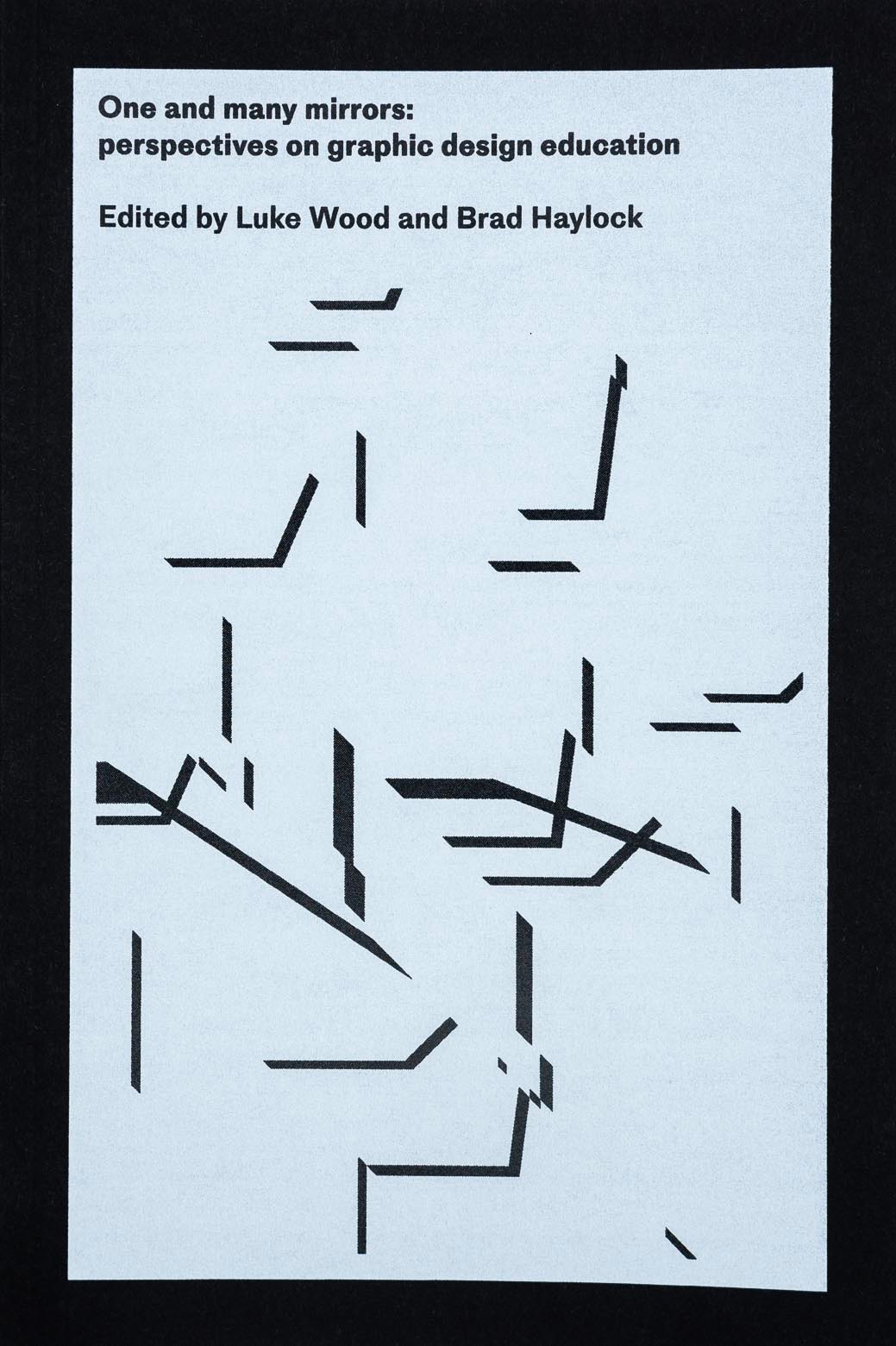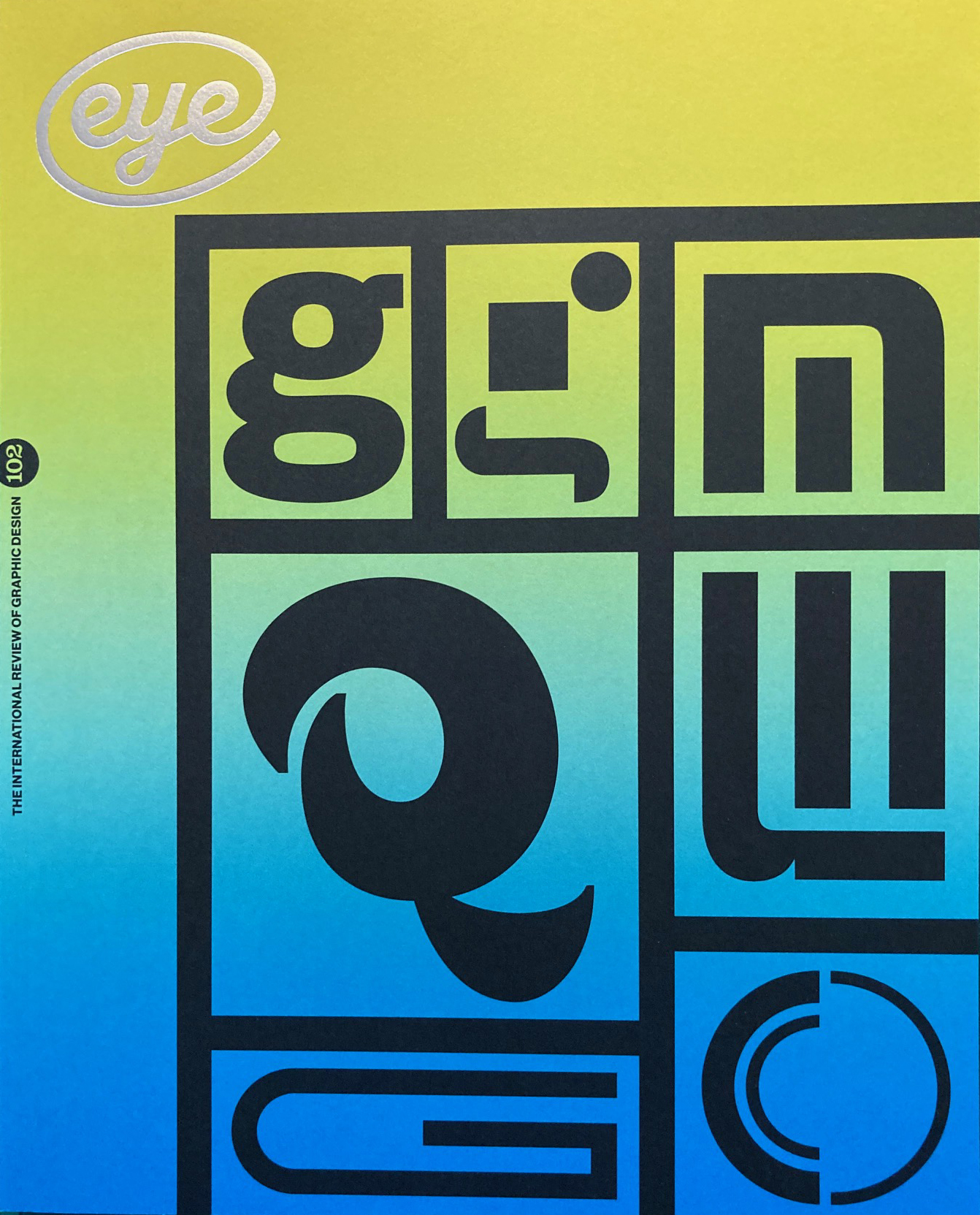Autumn 2021
Prism of teaching
One and Many Mirrors: Perspectives on Graphic Design Education
Edited by Luke Wood and Brad Haylock. Designed by Brad Haylock. Occasional Papers and The Physics Room, £20
Paul Elliman once spoke of a hypothetical online teaching environment that would embrace digital resources: ‘dictionaries, search engines, mailing lists, chat-rooms; along with a collection of scholarly (or not) web-links; a loose assembly of contributing texts, workshops, lectures, “slideshows”, notes and correspondences.’ Once these resources were collated, he suggested: ‘A content begins to take shape, presents itself as a space; people go there, a discussion begins.’ Elliman’s conception – articulated in an essay ‘Otherschools’ in 2002 and quoted in this anthology – was an attempt to imagine a new future of graphic design education that could transcend the confines of the institution.
Given the past year, one could be forgiven for forgetting that such dialogues – the kind that many academics have received from their higher-ups in myriad watered-down and bureaucratic iterations since the switch to online teaching in March 2020 – were already taking place before Zoom, Microsoft Teams and Slack became the centre of our educational universe. And perhaps it is even easier to forget, in such circumstances, that there are dialogues besides these that are crucial to the ways we envisage and challenge existing educational structures. In their anthology, One and Many Mirrors: Perspectives on Graphic Design Education, Luke Wood and Brad Haylock, with the help of the book’s various contributors, do no such forgetting. And despite being produced mostly pre-pandemic – although finalised from home offices in lockdown in 2020 – this book accomplishes the remarkable task of still not feeling out of date. For its audience, equally those rooted in the educational system and those on its peripheries, its publication is well timed, with many educators considering the possibilities of a post-pandemic university.
The contributions to this book are varied in both content and format: of the 22 texts (including Wood’s introduction), two pieces are labelled ‘in conversation’, eight are interviews, and twelve are essays (two of which are co-authored). A number of these texts have been published previously elsewhere, such as Rob Giampietro’s ‘School Days’, initially written for Graphic Design: Now in Production in 2011, or Ellen Lupton’s interview with Sheila Levrant De Bretteville, first published in Eye no.8 in 1993. While many readers will be familiar with these texts, they are well worth revisiting in a contemporary context. De Bretteville’s words, especially – that graphic design education can be the provision of ‘a variety of parallel experiences of coming to form’, and a space in which students may ‘put and find themselves in their work’ – are as applicable (and crucial) to the cultural conditions of today as they were to those of the early 1990s. Similarly, ‘Graphic design counter-education’, Jon Sueda’s interview with Joe Potts, founder of the Southland Institute in the US (first published in the Walker Art Center’s digital magazine The Gradient in 2017) outlines several alternatives to the many higher education arrangements that keep university decision-makers in bed with neoliberal, market economy ideologues.
The more discipline-focused questions of graphic design education – the teaching of ‘critical faculties’ over ‘hard skills’; how to circumvent an emphasis on formalism; the relationship of practice to history; and the merits of a teaching staff composed of working designers – are, throughout the book, tackled most effectively in interviews, where the participants can challenge each other’s perceptions and conclusions. The interviews by Wood and Haylock, with Stuart Bertolotti-Bailey and Richard Hollis respectively, are exemplary in this regard.
The benefits of an evolving conversation are present throughout the book. Alongside the customary exchanges that are part of most essays – as writer Brian Dillon notes in his 2017 book Essayism, essays are often a means to talk to, and debate ideas with, ourselves – there is a feeling, as one progresses through the book, that it is one long conversation; a dialogue unfolding in real time, each text informed by those that precede it. Questions, insights, historical junctures and personalities are established and challenged throughout the book and make all too clear the rewards of engaging with different perspectives and contexts. In the case of Corin Gisel and Nina Paim’s parallel essay ‘Stripping down and dressing up’, a reappraisal of the significance of dress to the educational ethos at Black Mountain College and the Hochschule für Gestaltung Ulm (the Ulm School of Design), this form of tête-à-tête between authors, established histories, and new knowledge, plays out in a single text.
If the mirrors referenced in the book’s title have blind spots, they can be found in the realms of decolonisation and racial and gender politics. Both graphic design education – from its resources to its curricula – and the graphic design practice that will follow for many of its students are still fundamentally racialised and gendered spaces. More of the discourse surrounding education must be devoted to destabilising higher education’s complicity in maintaining this socio-political apparatus. While there is a recurring consideration around the role of language and aesthetics in shaping and reflecting systems of knowledge – and the subjects above are periodically referenced here – the education of designers in the areas of decolonisation, gender and queer theory are of such importance that a dedicated space in which such ideas, voices and histories can be foregrounded and addressed is critical. There is too little, for instance, on alternative education models in non-Western geographies, on decolonising the curriculum, or on queer approaches to graphic design history and practice.
It would be inaccurate, however, to suggest that the book does not offer a thought-provoking survey of graphic design education. In addition to those highlighted above, the book includes an essay from the inimitable Teal Triggs on ‘The critical turn’, a co-authored essay from staff, students and recent graduates from the MA Graphic Media Design programme at the London College of Communication, and an insightful discussion between Noel Waite and Richard Buchanan on ‘transnational design pedagogies’. The book itself has a constrained, orderly design and features several expertly selected illustrations. As is typical of Occasional Papers publications, the book’s production is of a high quality and its humble dimensions are well suited to those of us who like to read on the move.
One and Many Mirrors offers a prismatic view of graphic design education and is valuable reading for those concerned with its past and potential progress. It is a testament to the book’s urgency that upon turning the final page, one feels less a desire to reflect further on what has been done, and more an eagerness to ask: what can we do next?
Alex J. Todd, design historian and writer, London
First published in Eye no. 102 vol. 26, 2021
Eye is the world’s most beautiful and collectable graphic design journal, published for professional designers, students and anyone interested in critical, informed writing about graphic design and visual culture. It is available from all good design bookshops and online at the Eye shop, where you can buy subscriptions and single issues.

